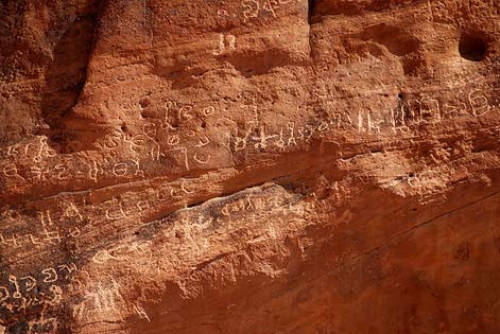This rare find is significant as it reflects the fusion of Nabatean and Arab scripts. The Nabateans expanded trade routes, establishing more than 2,000 trading posts in what is now Jordan, Syria and Saudi Arabia. The Nabatean empire’s rise to prominence remains a mystery to researchers.
The text is inscribed on a stone stele estimated to date from around 470 BC, corresponding to the period when the connection between Nabatean and Arabic writing was lost.
To date, no form of Nabatean literature has survived, however images of Nabatean hieroglyphs and letters have been found in various Nabatean cities, in the Negev, Wadi Rumm, the city of Petra and in Meda, and are a testament to the widespread literature during the period when Nabatean culture flourished, extending north as far as the Dead Sea.
Archaeologists continue to unravel the history of the Nabateans, which remains largely a mystery. The fact that they transitioned from a nomadic to a settled life, and built such magnificent cities at such an astonishing pace, has led scientists to question whether they were the true owners of these great cities and structures.

This is a project funded by the French Ministry of Foreign Affairs and the French Agency for International Development for an international network of archaeologists. The program has supported 148 projects in 60 different countries around the world.


































